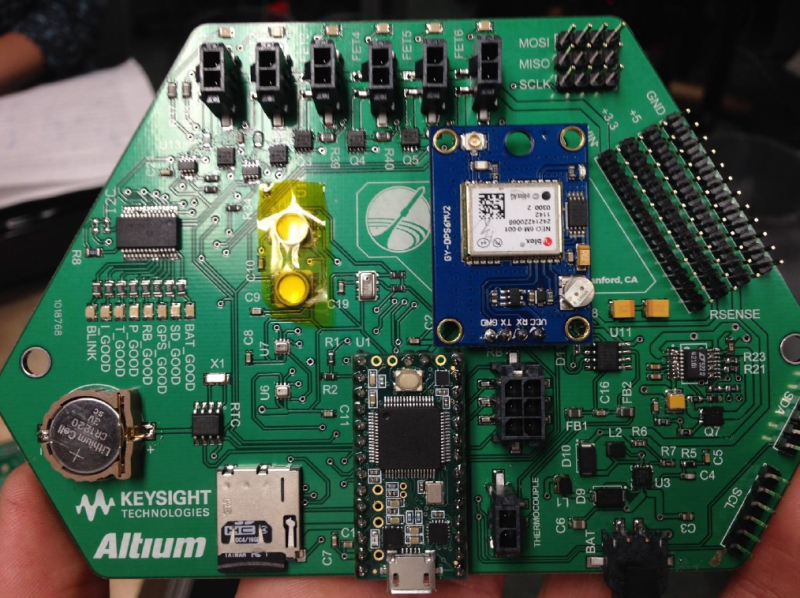Kirill Safin has designed a series of High Altitude Balloon Avionics sensor boards as part of the Stanford Student Space Initiative.

Student rocketry and avionics societies at colleges all around the world give students a chance to get some hands-on engineering experience. The Stanford Student Space Initiative is a brilliant example, encouraging students from Computer Science, Electronics Engineering, Mechanical Engineering and many more disciplines to work together on cool projects, including high altitude balloon avionics.
High altitude balloon avionics involves sending a balloon, typically a large weather balloon filled with helium or hydrogen, into the stratosphere. From this vantage point you can choose to do a number of things from taking sensor readings, to streaming video, sending images or delivering messages.
Each of these tasks needs different hardware. While Kirill Safin was an undergraduate at Stanford, he designed a series of boards to achieve his balloon avionic team’s objectives. The first of these boards, pictured above, was Oscar, a PCB that included a Teensy 3.2, five pressure and temperature sensors, an SD card for datalogging, a GPS breakout and a satellite communications module. Safin kept working on other boards after Oscar, releasing revisions called Cookie Monster and Elmo. He also made a modular version called Medusa with slots for the addition of mission-specific sensor boards.
Kirill Safin is now an Avionic Engineer at ABL Space Systems, working on satellite-launching rockets. You can look over his other undergraduate projects on his portfolio website.